


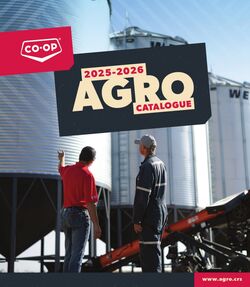
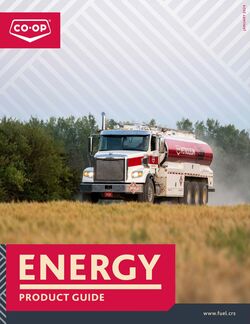
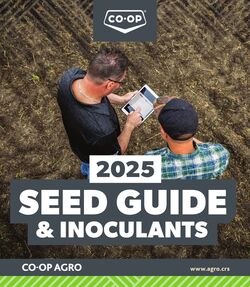







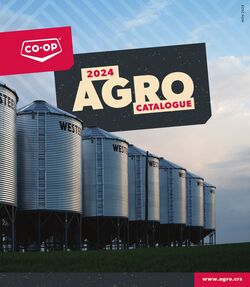
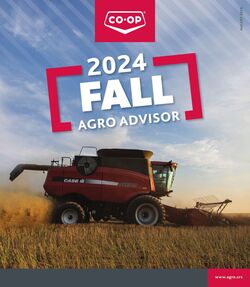
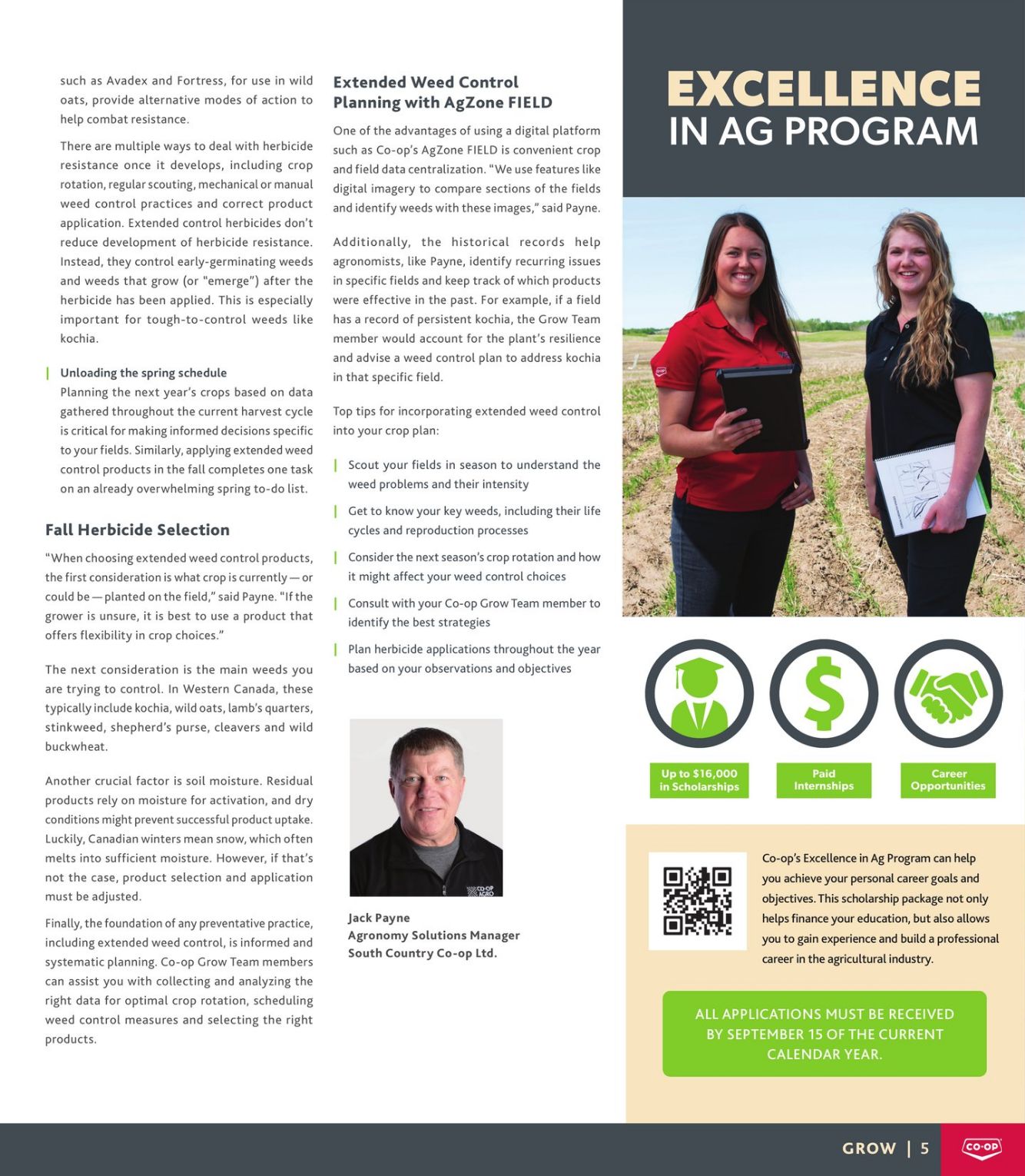
Products in this flyer
such as Avadex and Fortress, for use in wild oats, provide alternative modes of action to help combat resistance There are multiple ways to deal with herbicide resistance once it develops, including crop rotation, regular scouting, mechanical or manual weed control practices and correct product application. Extended control herbicides don't reduce development of herbicide resistance Instead, they control early-germinating weeds and weeds that grow (or ‘emerge") after the herbicide has been applied. This is especially important for tough-to-control weeds like kochia Unloading the spring schedule Planning the next year's crops based on data gathered throughout the current harvest cycle is critical for making informed decisions specific to your fields. Similarly, applying extended weed control products in the fall completes one task on an already overwhelming spring to-do list Fall Herbicide Selection “When choosing extended weed control products, the first consideration is what crop is currently — or could be— planted on the field," said Payne. “Ifthe grower is unsure, it is best to use a product that offers flexibility in crop choices." The next consideration is the main weeds you are trying to control. In Western Canada, these typically include kochia, wild oats, lamb's quarters, stinkweed, shepherd's purse, cleavers and wild buckwheat Another crucial factor is soil moisture. Residual products rely on moisture for activation, and dry conditions might prevent successful product uptake. Luckily, Canadian winters mean snow, which often melts into sufficient moisture. However, if that's not the case, product selection and application must be adjusted Finally, the foundation of any preventative practice, including extended weed control, is informed and systematic planning. Co-op Grow Team members can assist you with collecting and analyzing the right data for optimal crop rotation, scheduling weed control measures and selecting the right products Extended Weed Control Planning with AgZone FIELD One of the advantages of using a digital platform such as Co-op's AgZone FIELD is convenient crop and field data centralization. “We use features like digital imagery to compare sections of the fields and'identify weeds with these images," said Payne. Additionally, the historical records help agronomists, like Payne, identify recurring issues in specific fields and keep track of which products were effective in the past. For example, if a field has a record of persistent kochia, the Grow Team member would account for the plants resilience and advise a weed control plan to address kochia in that specific field. Top tips for incorporating extended weed control into your crop plan Scout your fields in season to understand the weed problems and their intensity Get to know your key weeds, including their life cycles and reproduction processes Consider the next season's crop rotation and how it might affect your weed control choices Consult with your Co-op Grow Team member to identify the best strategies Plan herbicide applications throughout the year based on your observations and objectives Jack Payne Agronomy Solutions Manager South Country Co-op Ltd. EXCELLENCE IN AG PROGRAM El EI È Co-op's Excellence in Ag Program can help you achieve your personal career goals and objectives. This scholarship package not only helps finance your education, but also allows you to gain experience and build a professional career inthe agricultural industry. ARE (co-oP
| Name | Details |
|---|